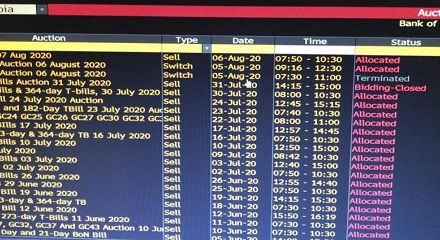
Oil moves give many operators hope, but profitability is still a long shot

In the last week of July, Nymex crude prices rose every trading day closing the week at US$49.87 per barrel. Brent was a tad higher at US$52.60. This immediately prompted a flurry of responses from analysts with the leading narrative, more or less attributing the rise to OPEC members’ decision to cut production by one million barrels per day.
Ostensibly this move is to improve crude prices so that member countries can get closer to budget balance, especially those whose only real economic contribution comes from oil.
The obvious question then becomes: What do these OPEC countries deem a reasonable price?
A combined report by Fitch, Highmark Capital and the IMF, of which the Wall Street Journal published an excerpt, shows that the only country that can survive sub-fifty oil prices, is Kuwait. For the rest, the target lies anywhere between U$51 and US$130 with the Middle East countries, except Saudi Arabia, occupying the bottom ranks of the list while it is glaringly obvious that Africa’s two major producers, Nigeria and Angola are in the top five.
Another report where the impact of the crude price was discussed in much broader strokes, I happened to find on YouTube of all places. Here a non-country specific picture emerged showing how certain crude sub-sectors are affected by the current glut in oil.
If one look at the bigger picture, the target price for oil sands and fracking producers will be between US$70 and US$80 per barrel while deep-sea production only makes investment sense above US$110. If the YouTube analyst is correct, it tells us a lot about the future of oil exploration in Namibia.
The target range of 70 to 80 dollars I accept as fairly accurate since this is corroborated by North American oil sands producers. There is a tsunami of literature available on the number of wells drilled in sands and in rock (fracking technology) and these all point to a drilling cost of around US$10 million per well. Oil wells in non-traditional sources have been shut down in droves over the past two years, another indication that crude around 50 can not sustain them. But then there are equally authoritative analyses showing that the oil from these producers contributed to the over-production. Add to that the export of oil and oil products from the United States and it becomes axiomatic that the world produced more oil than it needed.
Of the accuracy of the deep-sea estimates I am not so convinced for one simple reason, – there are very few places in the world where actual deep-sea extraction is taking place. Conversely, the technology is still in a pioneer stage, and is extraordinary expensive.
North Sea extraction, which is done typically in water depths of 200 to 400 metres, is an established and evolved industry, a fact reflected in the Brent price which is a mere three dollars higher than Texas Light Sweet Crude. So, there is a recognisable convergence in the price levels.
Deep-sea is done in water depths exceeding 1000 metres and the only notable field I know of is the Tupi field offshore Brazil, where the drilling depth is 1600 metres. It means there are too few deep-sea producers to get a credible indication of what future extraction costs will be. If the recent history of US oil sands provide any clue, deep-sea will quickly improve in both technology and efficiency as more producers come on line. But that is not the case yet.
Enter Namibia and our simmering aspirations of becoming a second Angola or Nigeria. First, these two countries extract from shallow waters, so no comparable deep-sea costs there. Secondly, all Namibia’s most promising prospects are deep-sea, typically in water depths around 1600 metres, very similar to Tupi.
So, let us play a few wild cards and speculate on some outcomes. If oil sands are looking at US$80, and deep-sea at around US$110, then it can be assumed that, with better technology and a lot of luck, future Namibian producers will target a crude price around US$100 per barrel.
The open question is, will that happen. Now the report I quoted earlier becomes important. If most of the OPEC members can make their budgets balance around US$65, it is highly unlikely that crude will go to 80. If higher prices create market space for US oil sands producers to come on line again, then the price will stabilise, and over the long term, deflate again. If it is true that the OPEC agreement is not worth the paper it is written on, then the recent rise is just market speculation and not based in any reality.
Whichever way it goes, it is highly unlikely that crude will return to US$100 and that means it is impossible to extract deep-sea oil in Namibian waters profitably. For us, over the medium term, I expect a lot of activity in the prospecting sphere, and many more baffling announcements from clueless politicians, but I doubt we will actually see one barrel being pumped to the surface.
In my mind, local oil discoveries will be marked and sealed in great secrecy but not actually exploited. So expect big announcement and even more outrageous claims, especially where exploration if driven by politics and not by market fundamentals, but do not expect any industry of note.
A Namibian deep-sea industry only makes sense when crude is at US$100, and I do not foresee that for a long time. Deep-sea resources are simply too insignificant to make any dent in the market, and the technology still needs another twenty to thirty years to mature. I do not see any immediate bright oil future for us, unless the Russians or the Chinese happen to sink a black well on the mainland.













































